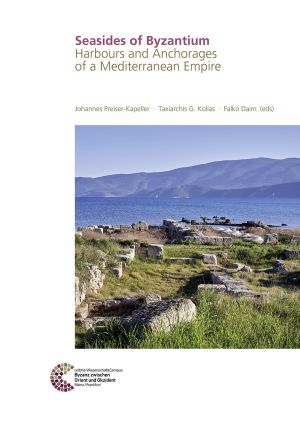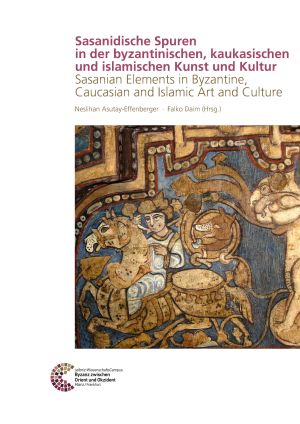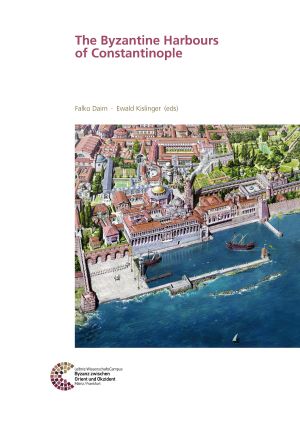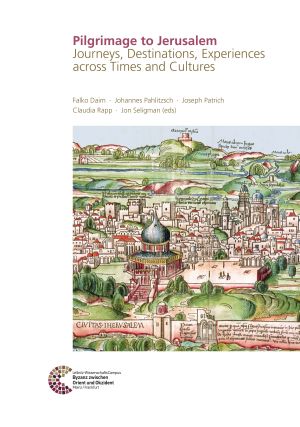Preiser-Kapeller, Johannes
Seasides of Byzantium: Harbours and Anchorages of a Mediterranean Empire
In recent years, interest in the study of maritime installations and networks in the Roman and Byzantine Mediterranean has increased considerably, as documented by various projects and publications.
The conference »Seasides of Byzantium. Harbours and Anchorages of a Mediterranean Empire«, from which the papers collected in the present volume emerged, took place in Athens in 2017 as part of a cooperation between the DFG-funded Special Research Programme (SPP 1630) »Harbours from the Roman Period to the Middle Ages« and the National Hellenic Research Foundation. It united historians, archaeologists and geoarchaeologists to explore harbours and anchorages as core maritime infrastructure to the Late Roman and Byzantine Empire.
General phenomena such as the organisation of the Byzantine navy and its operations or lighthouses are discussed in this volume as well as new geoarchaeological research methodologies in harbour archaeology. Most contributions in the present volume examine case studies for the most important maritime core region of the Byzantine Empire, the Aegean. This sea connected the remaining provinces of the empire in Southeastern Europe and Asia Minor after the loss of Syria, Palestine, Egypt, and North Africa to the Arabs in the 7th century AD. In addition to technical and geographical aspect, the studies in this volume make clear that we need to explore more and more the social embedding of the seasides of Byzantium to understand their dynamics in all their complexity.
Sasanidische Spuren in der byzantinischen, kaukasischen und islamischen Kunst und Kultur: Sasanian Elements in Byzantine, Caucasian and Islamic Art and Culture
The empire of the Persian Sassanids (AD 224-651) extended over the area of modern-day Iran, Iraq, Azerbaijan, Pakistan and Afghanistan. Even the Caucasus regions lay under their political influence. Many elements of Sassanian art and culture can be found in neighbouring lands, such as the Byzantine Empire and Christian Caucasus, and, following the fall of the Sassanids, continued in those areas under Islamic control which had developed on their former territory.
In order to investigate the continuing role of the Sassanian Persians and their culture, in September 2017 an international conference was held in the Römisch-Germanisches Zentralmuseum in Mainz. The papers given by academics from various disciplines are published in the present volume.
Die byzantinischen Häfen Konstantinopels
The fortunes of Byzantine Constantinople always have been intrinsically tied to the sea. Topographical, demographical and economical development of the city is reflected in the history of its harbours, which for the first time is concerned in its entirety in this volume.
Twelve studies regarding the harbours and landing places of the city at the Sea of Marmara and the Golden Horn – but as well regarding those in their European as in their Asian surroundings – are creating a synthesis of the current state of research by analysis of written, pictorial and archaeological sources.
The Byzantine Harbours of Constantinople
The fortunes of Byzantine Constantinople have always been inextricably linked to the sea. The topographical, demographic and economic development of the city and its networks are reflected in the history of its harbours. This volume offers an exhaustive study of Constantinople’s Byzantine harbours on the Sea of Marmara and the Golden Horn, as well as nearby European and Asian landing stages. The fifteen chapters by eleven contributors here present a broad synthesis of the current state of research using written, pictorial and archaeological sources.
Pilgrimage to Jerusalem. Journeys, Destinations, Experiences across Times and Cultures: Proceedings of the Conference held in Jerusalem, 5th to 7th December 2017
Jerusalem is a city holy to three world religions: Judaism, Christianity and Islam. From the early Byzantine period, Christian pilgrimage here and to other holy sites became a »mass phenomenon«. Thousands of Christians set out to holy sites in Palestine, Egypt and other places in order to physically experience salvation history and seek divine intervention in their lives. Numerous travel reports, pilgrim guides and other written sources highlight important aspects of pilgrimage. In addition, many well-preserved churches, monasteries, hostels and other buildings, as well as rich archaeological findings, provide us with a vivid and synthetic picture of the history of pilgrimage to the Holy Land.
Menschen, Bilder, Sprache, Dinge: Wege der Kommunikation zwischen Byzanz und dem Westen 2: Menschen und Worte
In 2018, the Roman-Germanic Central Museum Mainz presents in cooperation with the Schallaburg, the splendid Renaissance castle near Melk (Lower Austria), the exhibition »Byzantium & the West: 1000 forgotten years «.
Both Byzantium and the European West spring from the Roman Empire, but as early as Late Antiquity experience different developments. While the Roman Empire continued to exist in the East and passed seamlessly into the Byzantine Empire of the Middle Ages, pagan took its place in the West: the kingdoms of the Goths, Vandals, Anglo-Saxons, Lombards and Franks. Although Byzantium was respected or accepted as a major power by the other European entities for at least 800 years, territorial conflicts, disputes, and cultural differences quickly emerged. In addition, communication became increasingly difficult - in the "orthodox" East, Greek was the common language, while in the "Catholic" West, Latin was the lingua franca. Differences in liturgy and questions of belief intensified the disparities or were even (religio-) politically underlined to emphasize dissimilarity. But one still continued to admire "wealthy Constantinople" and the Byzantine treasures - among them the magnificent silks, ivory reliefs, technical marvels, plentiful relics and magnificent buildings.
The change came in 1204 with the conquest and plunder of Constantinople by the Crusaders. For the already weakened Byzantine Empire, this catastrophe meant a completely new situation as an empire in exile, whose emperor and patriarch had to flee to Asia Minor. Across much of the former European Byzantine Empire, crusader states spread; Venice and Genoa, which had previously been strongly present as trade powers under special treaties, became major determinants of the western powers in the East.
On the occasion of this exhibition, two accompanying volumes with a total of 41 contributions concerning the varied and changing relationships between the Latin West and the Byzantine Empire are being published. The volumes are structured according to the media of communication: people, images, language and things. They collect contributions from renowned scientists with archaeological, art historical, philological and historical priorities. Several overviews and detailed studies are drawn from research projects of the Leibniz- ScienceCampus Mainz: Byzantium between Orient and Occident, as well as the focus on Byzantine and medieval research of the Austrian Academy of Sciences in Vienna.












